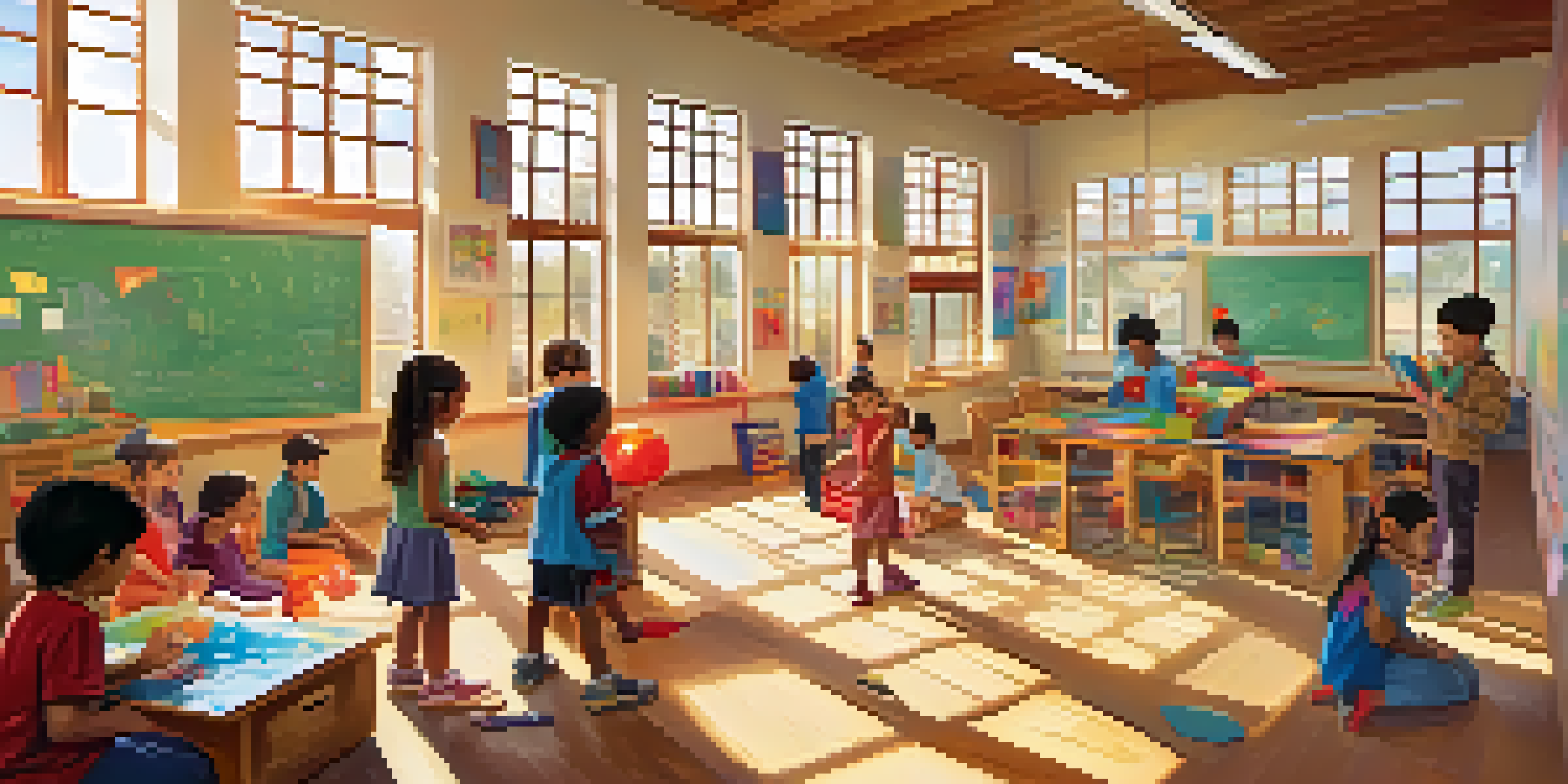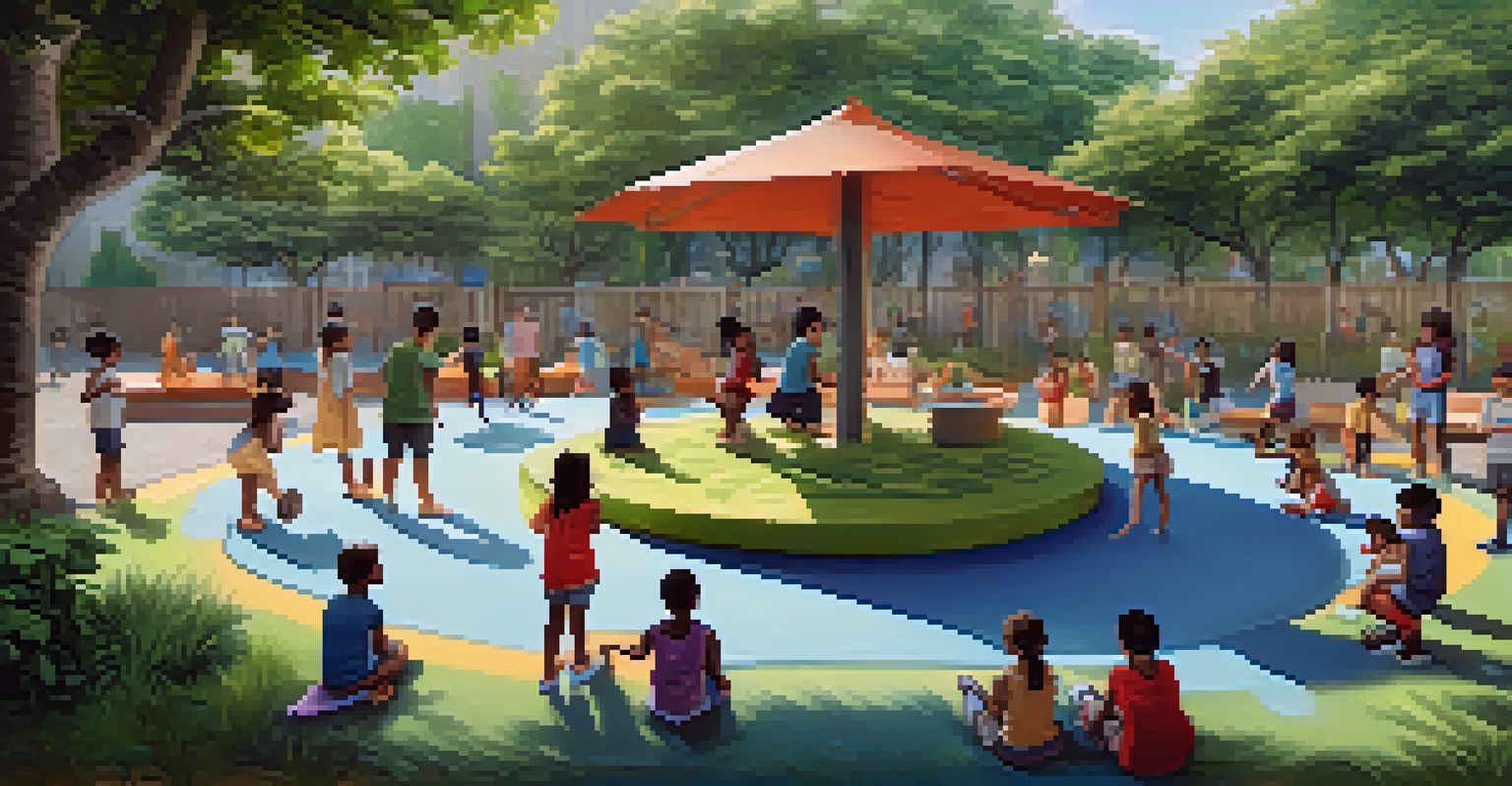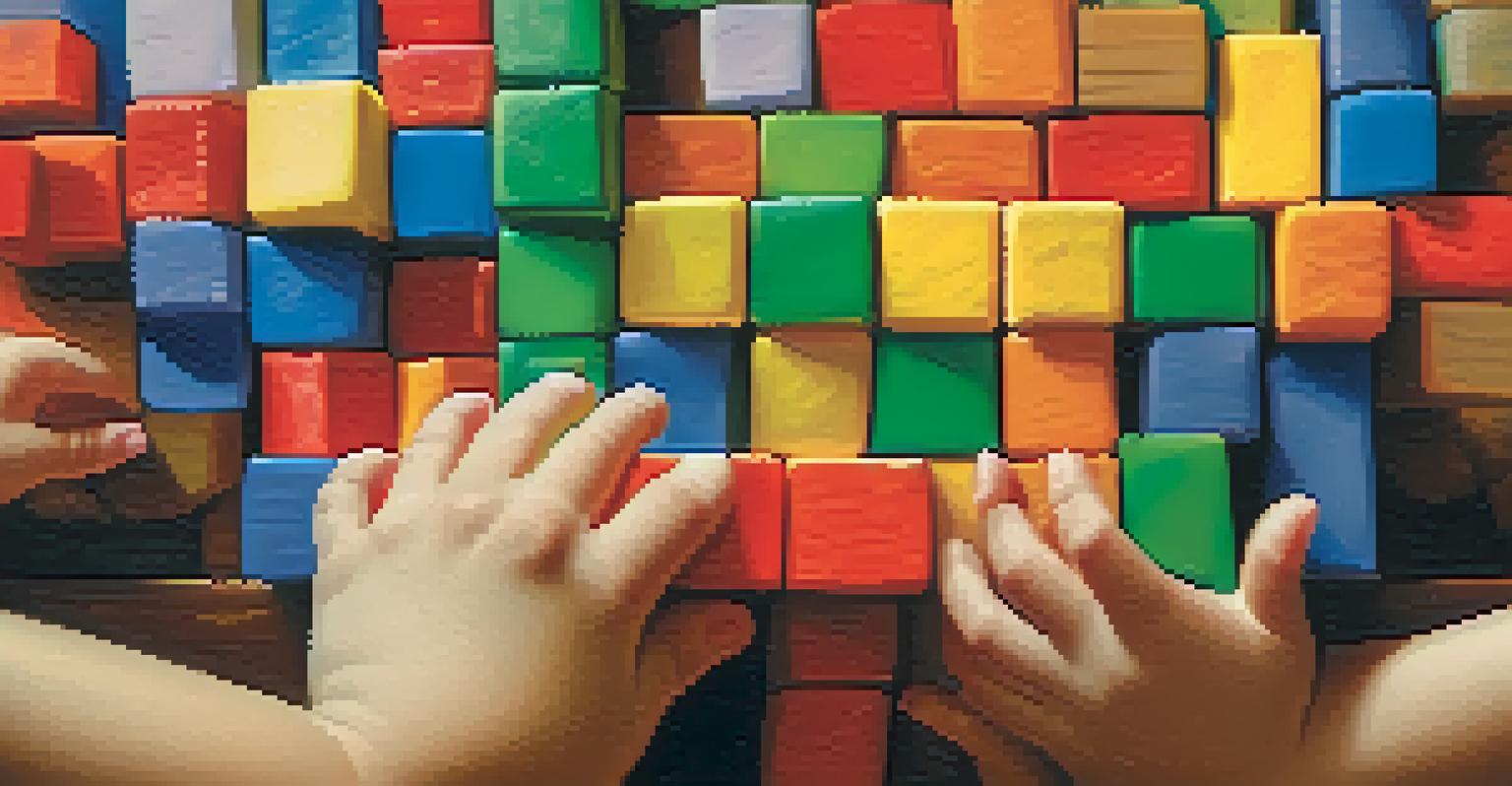The Role of Play in Culturally Responsive Teaching

Understanding Culturally Responsive Teaching
Culturally responsive teaching is an educational approach that recognizes and values students' cultural backgrounds. It aims to create a more inclusive environment where all students feel seen and heard. This method not only acknowledges diversity but actively incorporates it into the learning experience.
Education is not the filling of a pail, but the lighting of a fire.
By understanding the cultural contexts in which students live, educators can tailor their teaching methods to meet diverse needs. This ensures that learning is relevant and engaging, resonating with students on a personal level. Through culturally responsive practices, teachers can foster a sense of belonging and promote equity in the classroom.
In essence, culturally responsive teaching is about bridging the gap between students' home cultures and the school environment. It creates a rich tapestry of learning where different perspectives are celebrated. This sets the stage for the role of play, which can further enhance these educational experiences.
The Power of Play in Learning
Play is often seen as an essential part of childhood, but its role in education is just as critical. When students engage in play, they learn to explore, experiment, and express themselves freely. This natural form of learning promotes creativity and problem-solving skills, which are vital for academic success.

Moreover, play allows students to process their experiences and emotions in a safe environment. It builds social skills as children learn to collaborate, negotiate, and resolve conflicts during playtime. These interactions are foundational for developing empathy and understanding among peers from various backgrounds.
Embracing Cultural Diversity in Class
Culturally responsive teaching values students' cultural backgrounds, creating an inclusive environment that enhances learning.
Incorporating play into the classroom can also make learning more enjoyable and less intimidating. When students feel relaxed and engaged, they're more likely to participate actively and take risks in their learning. This shift in mindset can lead to greater achievements and a deeper understanding of the material.
Play as a Tool for Cultural Expression
Play serves as a powerful medium for cultural expression, allowing students to share their backgrounds and traditions. Through role-playing, storytelling, and games, children can communicate their cultural narratives in ways that resonate with their peers. This sharing fosters mutual respect and appreciation for diverse cultures.
Play is the highest form of research.
For example, students might enact traditional stories from their heritage, bringing their unique perspectives into the classroom. Such activities not only enhance understanding but also validate students' identities, making them feel valued. This reinforces the concept that learning is not a one-size-fits-all approach.
By integrating culturally relevant play into the curriculum, educators can help students connect their personal experiences with academic content. This approach promotes deeper learning and encourages students to see the relevance of their culture in the broader context of the world.
Building Relationships Through Play
Play is a natural way to build relationships between students and teachers. When educators join in playful activities, they demonstrate that learning can be fun and relatable. Such interactions help break down barriers and create a more approachable atmosphere in the classroom.
These shared experiences can lead to stronger bonds, as students feel more comfortable expressing themselves. As trust develops, students are more likely to engage openly with their teachers, leading to better communication and collaboration. This is particularly important in culturally diverse classrooms where understanding and respect are essential.
Play Enhances Learning Engagement
Incorporating play in education promotes creativity, critical thinking, and helps students feel comfortable participating.
Additionally, these interactions pave the way for open discussions about cultural differences and similarities. When students feel safe in their environment, they are more willing to share their stories and perspectives, enriching the learning experience for everyone involved.
Fostering Critical Thinking Through Play
Engaging in play encourages critical thinking and decision-making skills among students. When children participate in games or creative activities, they must strategize, solve problems, and make choices. This process develops their ability to think critically and adapt to new challenges.
For instance, during a group project that involves play, students must consider various viewpoints and negotiate roles. This cooperative learning experience fosters collaboration and enhances their ability to evaluate different perspectives. Such skills are essential for navigating an increasingly diverse and interconnected world.
Moreover, play allows for trial and error, which is a natural part of the learning process. Students learn that making mistakes is okay and can lead to new insights. This resilience is crucial in culturally responsive teaching, where adaptability and openness to learning from others are key.
Creating Inclusive Play Environments
To harness the benefits of play in culturally responsive teaching, educators must create inclusive play environments. This means providing materials and activities that reflect the diverse cultures of all students. When children see their backgrounds represented, it reinforces their sense of belonging.
Inclusive play environments also encourage collaboration among students from different backgrounds. By working together, they can learn from each other's experiences and perspectives, enriching their understanding of the world. This collective learning experience fosters empathy and respect among peers.
Assessing Learning Through Play
Play-based assessments provide a holistic view of student abilities, revealing creativity and critical thinking skills.
Furthermore, educators should be mindful of varying play styles and abilities. By offering a range of activities, all students can participate meaningfully. This approach not only supports individual growth but also strengthens the social fabric of the classroom.
Assessing Learning Through Play
Assessing learning through play can provide valuable insights into students' understanding and skills. Traditional assessments often fail to capture the full range of a student's abilities, while play-based assessments can reveal creativity, critical thinking, and cultural knowledge. This holistic approach allows educators to evaluate student progress more effectively.
For example, observing students during play can help teachers identify strengths and areas for improvement. This observational data can inform future lesson planning, ensuring that instruction is tailored to meet the needs of all students. By aligning assessment with play, educators can create a more supportive learning environment.

Additionally, play assessments foster a growth mindset. Students are more likely to view their learning as a journey rather than a destination when they engage in playful, low-stakes evaluations. This perspective can enhance motivation and encourage lifelong learning.